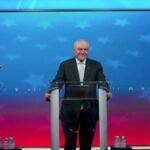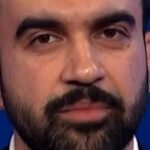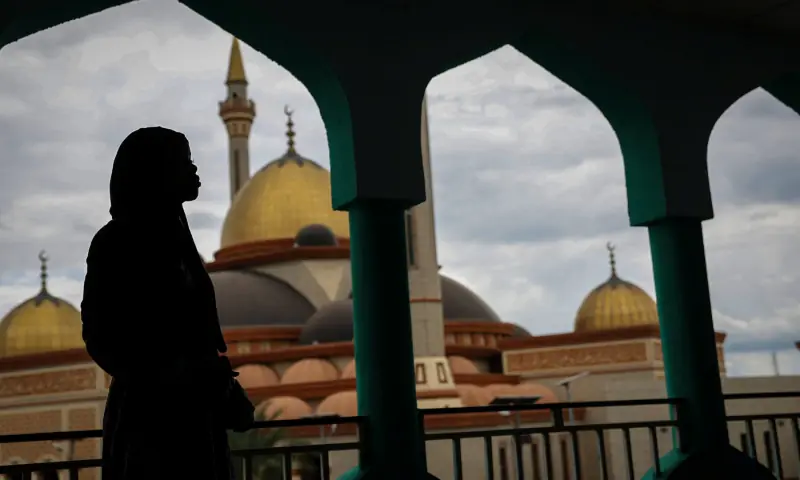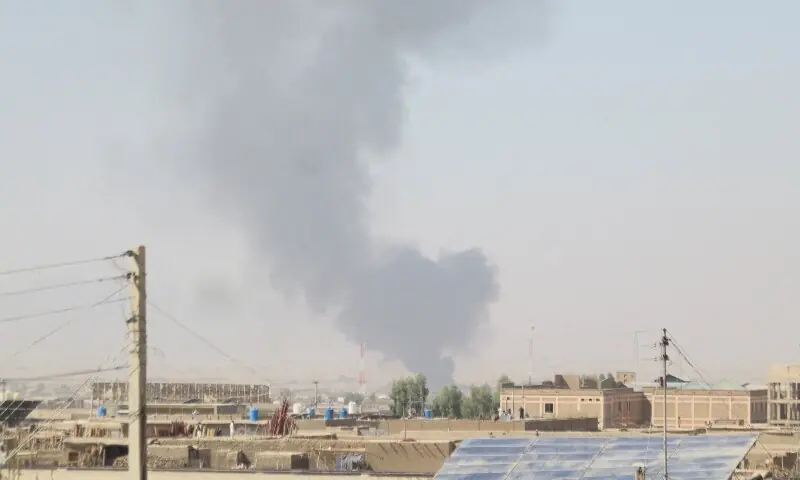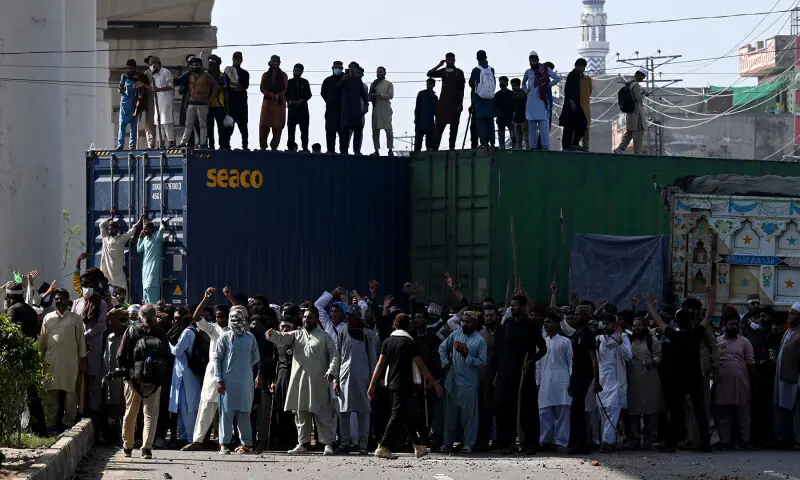“One of the historic errors the US made — going back to the Carter administration — was the fiction of being an honest broker… I think what President Trump understood… was if the world knows nothing else, the world needs to know this: that America stands with Israel.”
— Mike Pence, former US vice president speaking to David Friedman, orthodox Jew and former US ambassador to the Zionist entity on Trinity Broadcasting Network
“In the last several decades, the Palestinian leadership has missed one opportunity after the other… It is about time the Palestinians take the proposals and agree to come to the negotiations table or shut up and stop complaining.”
— Crown Prince Mohammed Bin Salman, speaking to heads of Jewish organisations in New York on March 27, 2018
“There is intelligence cooperation between Bahrain and Israel. Mossad is in Bahrain and they are present in the region… intelligence cooperation is part of our ongoing partnership between Bahrain and Israel and will continue.”
— Sheikh Abdullah bin Ahmed Al Khalifa, undersecretary at Bahrain’s foreign ministry, speaking at the Munich Security Conference
“In any future arrangement… Israel needs security control over all territory west of the Jordan. This collides with the idea of sovereignty [for Palestinians]. What can you do? This truth I tell to our American friends, and I put the brakes on the attempt to coerce us to a reality that would endanger the state of Israel.”
— Benjamin Netanyahu, prime minister of the Zionist entity at a nationally televised conference in January 2024
UPFRONT
As I write these lines, the immediate conditions in US President Donald Trump’s so-called ‘peace plan’ for the Middle East are being negotiated in Cairo. There are two ways of analysing the 20 points: as a standalone document or a document that must be juxtaposed with historical developments that have plagued the land of Palestine since colonial powers declared it terra nullius to solve Europe’s ‘Jewish problem.’
In this space I propose to first look at Trump’s plan as it stands and then collocate it with factors that have served to elude real peace in Occupied Palestine. Those factors are important because, without addressing them, Trump might just be setting up the place for more instability. And it won’t be for the first time.
As we would see, what was hailed as his greatest foreign policy achievement in the previous tenure, the Abraham Accords, contributed in no uncertain way in creating the conditions that led to increased Zionist violence in the Occupied Palestinian Territories (OPTs) and ultimately to the October 7 attack by Hamas.
Before we proceed further, let’s establish a simple fact: this is not a peace plan. In fact, it’s not even a plan. At best, it can be described as a framework or certain guidelines. Its first and foremost objective is to achieve a ceasefire.
That cannot be faulted in and of itself, given the devastation in Gaza and the ongoing genocide in the Strip. But it’s important to flag this point to temper expectations about what can be achieved through these 20 points.
Far from promising lasting peace, US President Donald Trump’s plan for Gaza not only ignores the structural causes of the conflict in Palestine, it cements Zionist occupation, erases Palestinian sovereignty, institutionalises apartheid and legitimises genocide under the guise of diplomacy
The second fact is that this document does not address any of the structural, political, social, legal, economic and security issues for the Palestinians in Gaza or the OPTs, issues that have remained unaddressed since the colonial British Mandate.
UNPACKING THE PLAN
For a document that describes itself as a ‘peace plan’, it is surprisingly short on detail — granular specificities about timelines — and ambiguous over who gets to decide the timelines regarding multiple transitions or even how those transitions will take place.
Who is the overarching power? Trump at the head of a ‘Board of Peace’, the discredited and much-reviled Tony Blair representing Trump, or the apolitical Palestinian body assigned to run the municipal affairs in the Strip under an international transitional authority?
Who will determine that Gaza has been deradicalised and demilitarised? Which authority will command the international stabilisation force? Trump or the United Nations, which has traditionally operated peacekeeping and enforcement operations around the world under relevant UN Security Council resolutions?
This is not mere technicality. The Zionists abhor the UN; the UN has declared the assault on Gaza as a genocide. Trump and the US haven’t. Would the ISF report to Trump? Will this force come into being outside the UN/UNSC framework?
Observers have already noted how this document is loaded against the Gazans and is supportive of the Zionists. The linguistic vagueness of some of its clauses allow the Zionist entity large wiggle room to unilaterally determine whether conditions are being met, even for an extended ceasefire, the most immediate purported outcome. It throws the idea of a Palestinian state beyond the horizon into some unseen future and the document wilfully ignores the very causes of the conflict.
If anything, by bringing in international actors and a non-Palestinian stabilisation force — which the document describes as a “force [which] will be the long-term internal security solution” and coordinate with “Israel and Egypt to help secure border areas” — it seeks to replace the Zionist occupation of Gaza with another occupation.
It will be deeply ironic if the Gulf states pay for the structures of this new occupation, including the ISF, because the Zionist entity could argue that it is no longer in occupation of Gaza even as Gaza remains occupied and the Zionists continue to determine the Strip’s future.
Another important point is the mention of the January 19, 2025 agreement in the current document. That agreement saw prisoner swaps and was supposed to end the war. The Zionists unilaterally broke it on March 18, with pre-emptive strikes and justified the action “based on Hamas’s readiness to execute terror attacks, build up force and re-arm.”
But even before they broke the agreement, they had restricted the entrance and delivery of aid by fully controlling the Rafah crossing between Gaza and Egypt. In this document too, they will retain control of Rafah and the Philadelphi Corridor, which runs along the entire border between Gaza and Egypt.
The document also envisages an interfaith dialogue geared towards changing mindsets and narratives. It is not clear how the exercise would work or who would undertake such a dialogue (the US? Some international syncretic body?). Who would determine that the mindsets have changed? Would it require addressing the apartheid and the occupation to which Palestinians have been subjected since 1948?
There’s no mention in the document of Zionist settlements and what Israeli architect and activist Eyal Weizman called vertical apartheid in the OPTs. In fact, the point about nixing the Zionist entity’s annexation of OPTs has just disappeared from the draft made public.
As for rebuilding Gaza and rehabilitating Gazans, the UN has estimated that 100 trucks working daily will take a minimum of 15 years just to clear the debris and unexploded ordnance in Gaza.
This is just a barebones review. There are multiple other points: reforming the Palestinian Authority (PA) and a maybe-ish reference to a credible pathway to a Palestinian state. Who will determine the key performance indicators for PA reforms? The Palestinians, the UN, the ‘Board of Peace’ or the Zionist entity? Who will determine and approve the conditions that may finally lead to Palestinian self-determination? What is the timeline? None of this is specified.
Trump wants quick results. Guess what? There are no quick results here. The win predictor for the plan as a just resolution forward is almost zero.
What Trump could do, however, is to set his peace plan on the right path by getting the history right. And it’s first lesson is that Zionists want to exterminate and expel the Palestinians. In order to understand the correct order of things, Trump has to first grasp that.
WHY TRUMP GOT IT WRONG THE LAST TIME
It all began after Donald Trump won as 45th President of the United States. Even before taking oath of office, he was working in support of the Zionist entity.
On the campaign trail, he had declared: “I think that [Barack] Obama has been very, very bad for the people of Israel. I am extremely strongly in favour… I respect it and have loved the people of Israel for a long time… we’re going to make sure that Israel is going to be in very good shape forever.”
During the transition period after his election, Netanyahu’s US ambassador, Ron Dermer, reached out to Trump to say that the outgoing president, Obama, whose relationship with Netanyahu had long hit rock bottom, was preparing to make a diplomatic move on the Palestinian issue at the United Nations Security Council. The move was to be spearheaded by Egypt.
Then, on December 21, 2016, Egypt circulated a draft condemning Zionist activities in the OPTs and declared that it would bring it to a vote in the UN Security Council the very next day. The Zionist entity went into overdrive. Netanyahu tweeted: “The US should veto the anti-Israel resolution at the UN Security Council on Thursday.”
Barak Ravid, a journalist from the Zionist entity, writes in his book Trump’s Peace that “Trump also put out a public statement calling on Obama to veto the resolution.” To cut the story short, the Egyptians caved into pressure from the Trump camp and Cairo declared that it was suspending the resolution indefinitely.
But the relief was short-lived. New Zealand, Malaysia, Senegal and Venezuela picked up the dropped ball and rammed the resolution through, with the US abstaining but not vetoing it. Netanyahu, Ravid writes, was furious, and summoned Dan Shapiro, the Jewish US ambassador to the Zionist entity, to give him a dressing down.
Later, Trump was to appoint David Friedman, an orthodox Zionist, as ambassador to the Zionist entity. Friedman’s orthodox religious views, his rejection of Palestinian statehood, his concept of Eretz Yisrael [Greater Israel] and his description of liberal Jews as “worse than kapos [a prisoner functionary at a Nazi concentration camp]” — a remark that almost cost him his nomination — are openly given in his book Sledgehammer: How Breaking with the Past Brought Peace to the Middle East.
The other person in Trump’s Middle East team was Jason Greenblat, who had studied in the 1980s “at a Yeshiva [Jewish seminary] located in a settlement” and “who shared Friedman’s passion for defending Israel.” The third was his son-in-law, Kushner.
After Trump’s inauguration, Kushner was to be the point person for resolving the Palestinian-Zionist conflict. Kushner brought in Avi Berkowitz, who had also spent years studying at a Yeshiva in Jerusalem. The composition of the team and how it would approach the issue was summed up by Friedman when he jokingly said: “Three orthodox Jews, that doesn’t seem like a good start.”
Kushner was clear. Getting the Zionist entity to deal with Palestinians was to be a separate track from getting Arab countries to normalise with the Zionist entity. His reasoning was thus: the UAE and Bahrain want to normalise with the Zionist entity. They want to be in the US camp and they are looking to modernise and diversify their economies. Let’s get Arab states to normalise and create the conditions that will force the Palestinians to make peace with the Zionist entity, having despaired of any external support.
The details of that process are complex and outside the scope of this article. But the long and short of it is that Trump’s Middle East team produced the Abraham Accords, despite Netanyahu’s insistence that there will be no Palestinian state and despite his constantly changing the goalposts and even blindsiding Trump during the presentation by Trump of the political portion of a peace deal at the White House in January 2020. Titled ‘Peace to Prosperity: A Vision to Improve the Lives of the Palestinian and Israeli People’, the deal sought to initiate a dialogue track between Zionists and the Palestinians.
Ravid notes in his book that, just as Trump presented his proposal, Netanyahu chimed in to say that “Israel will apply its laws to the Jordan Valley, to all Jewish communities in Judea and Samaria [West Bank] and to other areas that your plan designates as part of Israel and which the US agrees to recognise as part of Israel.”
Trump later reportedly said, “What the hell was that?” His proposal, even as it was loaded against the Palestinians and accepted the illegal Israeli settlements, was nonetheless about a land swap. It was a terrible deal — barren land for the Palestinians of the OPTs in the Negev desert — but it did allow some concessions to the Palestinians.
As the author and researcher Elham Fakhro writes in her book, “Netanyahu’s unilateral approach would have fragmented a possible Palestinian state beyond the model envisaged under the Trump proposal” and dispensed with any discussions with the Palestinians. In an interview to Ravid after he lost the election to Joe Biden, Trump used the F-bomb for Netanyahu and maintained that the man was simply not interested in a deal with the Palestinians.
In truth, the Trump and Netanyahu approaches can best be described as soft and hard annexations. David Friedman and Mike Pompeo wanted full annexation of the OPTs without any concessions to the Palestinians, while Kushner and Berkowitz insisted that “Israel’s annexation could only happen as part of the conditions laid down in the plan itself.”
The plan was rejected by the Palestinians as well as West Bank settlers who, like Netanyahu, were and are simply opposed to any idea of a Palestinian state and consider themselves the second vanguard to occupy the entire ‘Land of Israel’, as given in the Bible. For the settlers, a four-year freeze on settlement activity as part of the plan was another concession by Trump to the Palestinians on an issue that the Zionist hard right considers non-negotiable.
The plan was designed to fail, since Trump had earlier reversed decades of policy and accepted Jerusalem as the Zionist capital, recognised the occupied Golan Heights as part of the Zionist entity, and was now legitimising the settlements in violation of the 1978 Hensell Memorandum — wherein the US State Department legal adviser Herbert J Hansell had determined that Zionist settlements contravene the Fourth Geneva Convention and are therefore “inconsistent with international law.”
With the Zionist-Palestinian peace track dead in the water, it was the second track, getting interested Arab states to normalise with the Zionist entity that became the hallmark of Trump’s Middle East peace plan. The UAE and Bahrain already had covert and overt channels with the Zionist entity. It was time to make normalisation public, beginning with the UAE.
Here too, Netanyahu backtracked on his promises. One of the conditions by the UAE for normalisation was that the Zionists would not annex the OPTs. Within hours of Trump announcing the historic peace, Netanyahu in a televised speech said that “he had only agreed to delay the plans for annexation and not forgo them entirely.”
But the die had been cast and “Netanyahu’s backtracking did little to dissuade other states from following in the UAE’s footsteps.” Earlier, attempts by the PA to push through a resolution at the Arab League had failed because other member states did not want to antagonise the UAE.
Palestine’s and Palestinians’ isolation had begun. Simultaneously, unbeknown to anyone at the time, with Netanyahu gloating over his success to prescind the Palestinians and to ratchet up Zionist excess in the OPTs, the countdown to October 7, 2023 had also begun.
In trying to make a deal without appreciating the complexity of the situation, Trump had ended up preparing ground for a conflict that would result in Palestinian genocide and the Zionist entity’s isolation.
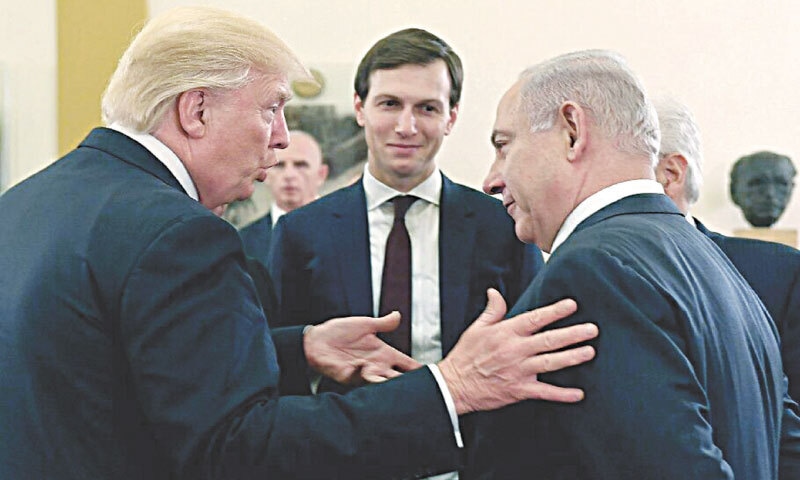
WHAT NEXT
After the Zionist entity’s illegal strike in Doha, which rattled the Gulf states, there was some expectation that the extraordinary session of the Arab League (AL) and the Organisation of the Islamic Conference (OIC) at Doha would come up with some concrete measures.
Instead, we got a lacklustre statement. For instance, the states that have normalised relations with the Zionist entity under the so-called Abraham Accords refused to entertain the idea of even downgrading diplomatic relations.
This was a repeat of the 2023 combined AL/OIC summit two weeks into the murderous onslaught of the Zionist entity in Gaza. The summit was convened by Saudi Arabia. But while it issued a pro forma statement calling for an immediate ceasefire, the entry of aid into the strip and the revival of talks around the two-state solution as the only viable framework for addressing the conflict, the six states that had normalised with the Zionist entity refused suggestions by Iran and Algeria that they cut off ties with the Zionist entity.
The summit ended up showcasing differences rather than closing ranks.
To recap: the Trump plan (a) treats the Palestinians as a threat, not an aggrieved party; (b) seeks to take the wind out of the sails of the movement to recognise Palestine; and (c) gives to Netanyahu what he wanted: Gaza under control, continuation of the policy of colonising the OPTs and interring the idea of a Palestinian state.
Trump recently told the media in the Zionist entity that “Israel has suffered a lot of damage on the world stage and I am gonna fix it. This [peace plan] is gonna fix it.”
One major problem from Netanyahu’s viewpoint is that, true to form, Trump is making it very public that he is the boss and he is pushing the buttons. Equally, Netanyahu is using it to get his rightwing coalition in line and telling them that this is about more than Gaza.
While his coalition has no interest in ending the war and most do not even see the return of captives as a priority — they want to expel the Palestinians and take over Gaza and the OPTs — they also want to stay in power. Recent polls show Netanyahu is unlikely to win a majority in the elections. That is helping to keep the flock together. Meanwhile, Netanyahu is most likely waiting for an opportunity to put a spoke in the wheels.
That could come sooner rather than later, since Hamas has entered the negotiations on a partial acceptance of the plan — the return of captives and permanent ceasefire — and has made no reference to the 20 points.
Hamas has also rejected any Western/external role in Gaza’s governance by saying that it “renews its agreement to hand over the administration of the Gaza Strip to a Palestinian body of independents (technocrats), based on Palestinian national consensus and Arab and Islamic support.”
Similarly, its ‘acceptance’ remains silent on one of the key demands of the US-Zionist plan: that Hamas disarm. Instead, Hamas has obliquely indicated that its disarmament and any role in governance are issues to be debated through an intra-Palestinian consensus. The subtext is that disarmament will have to proceed from, not precede, the establishment of a Palestinian state and the future is not just for Hamas to decide but must be based on a collective Palestinian consensus.
Read another way, Hamas is signalling that, beyond this point, the Palestinians as a collective need to step in and decide the future.
Netanyahu is hoping that, after the captives are returned, Trump would give an ultimatum to Hamas to accept other parts of the plan or face renewed hostilities.
So, why are the Arab states going along with this? First, because they also want an end to Hamas and second, they are hoping for some arrangement worked out by Trump, whereby the Zionist entity will give some space to the Palestinians, so they can continue with the normalisation process, the jewel being Saudi Arabia.
This is unlikely to happen because the very structures of this occupation prevent the Zionist entity from making a compromise with the Palestinians.
EPILOGUE
The Trump plan is unlikely to fly because (a) it’s ahistorical; (b) it doesn’t understand the nature of this war and its many battles; (c) it ignores societal attitudes in the Zionist entity, where the majority wants this war to continue and believes there are no innocents in Gaza; (d) the Zionist entity will never allow a Palestinian state — its parliament voted 68-9 in July 2024 to reject the idea of a Palestinian state, calling it an “existential danger” to the Zionist entity; and (e) flowing from (c) and (d), the Zionist entity has no interest in peace.
Its foremost objective is to ethnically cleanse Gaza and genocide is the means to that end.
The current talks might bring a brief reprieve, but a structural analysis forces us to look at the possibility of peace (defined even narrowly) as highly improbable. This should not be lost on the states that have “normalised” with the Zionists and thrown the Palestinians to the wolves. Will they re-evaluate?
Let me answer this question by first listing what they should have done after the Doha strike and which they can still do, and then list why they won’t do it and where this is headed.
What they should have done is:
• Derecognise/ delegitimise the Zionist entity
• Cut off and embargo trade and investment with the Zionist entity
• Close all ports for Zionist-destined shipping
• Close airspace for Zionist carriers
• Close US bases in the region (the OIC should have an extraordinary session, which should address the concerns of states)
• Make a clear declaration of support for Palestine, including the right of return and ditching the stupid two-state solution
• Provide financial support for building frontline states’ military capabilities
Much else can be done, but this should provide the baseline.
But this will not happen, because the ruling monarchies/ dictators want to perpetuate their rule and, in that, the US and the Zionists are their allies. So there’s no enabling environment for the actions listed above.
Three factors could help change this environment, one of which is happening:
• The extermination and expulsion of Palestinians from Gaza and the OPTs. In other words, complete occupation and annexation of Palestine. This will lead to a big exodus of Palestinians into Jordan, Egypt, Lebanon and Syria.
• Continued attacks by the Zionists into neighbouring states, forcing them to rethink their options.
• The emergence of internal groups (Amal/Hezbollah in Lebanon against Zionist occupation of the ’80s/’90s is an example) that could either force the rulers to change course or help new dispensations to emerge.
As the political scientist and activist Norman Finkelstein said in an Al Jazeera programme, “There is no silver lining in a genocide.”
The writer is a journalist interested in security and
foreign policies. X: @ejazhaider
Published in Dawn, EOS, October 12th, 2025
